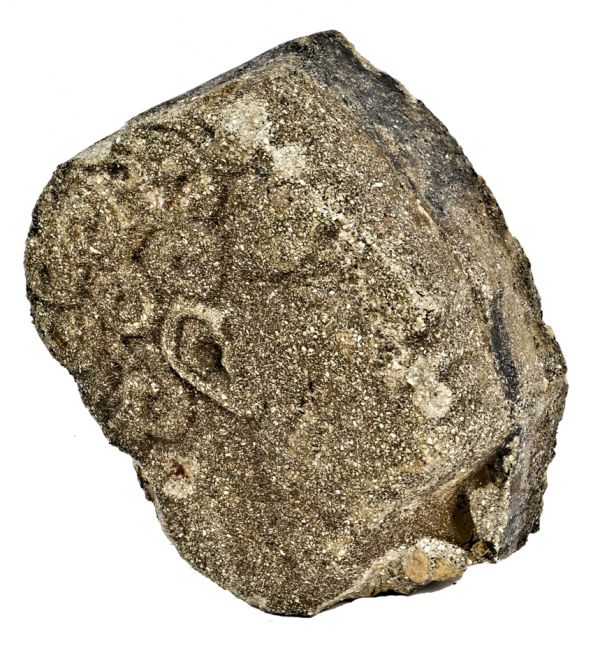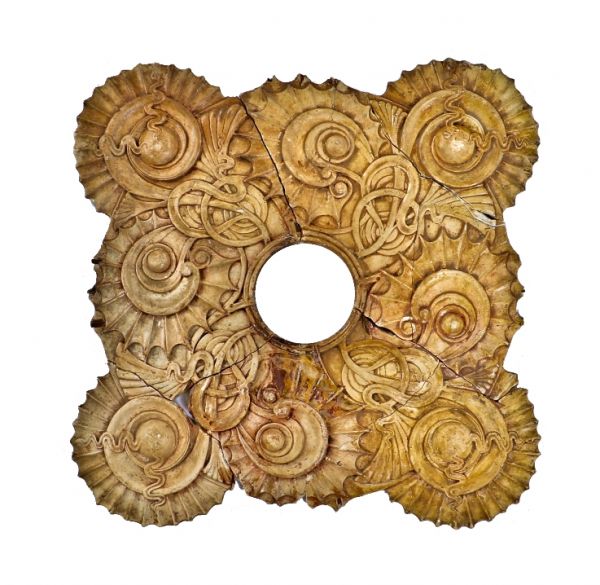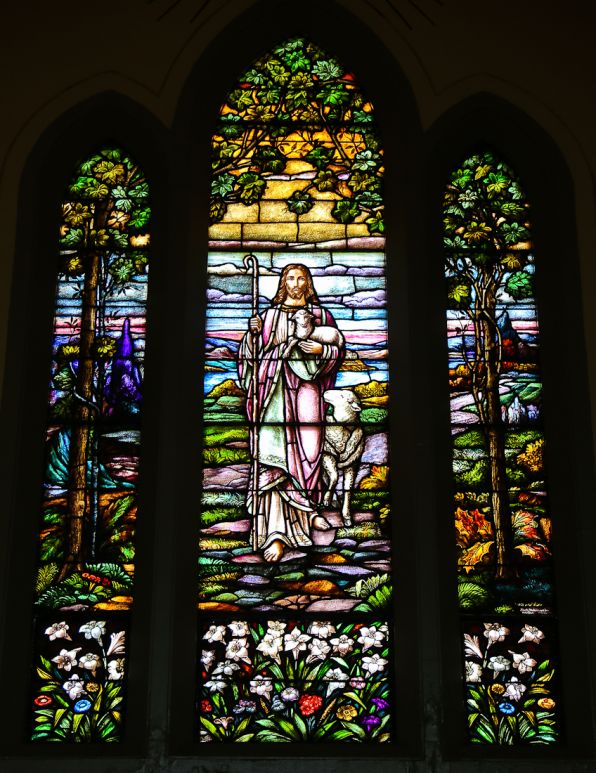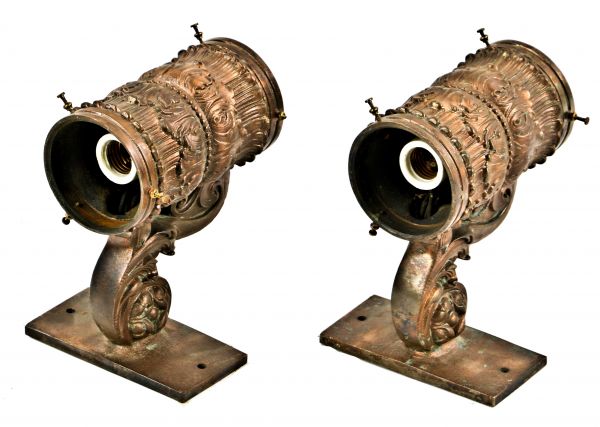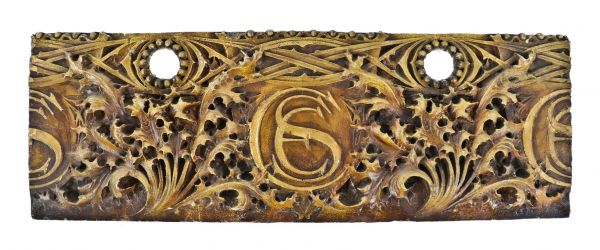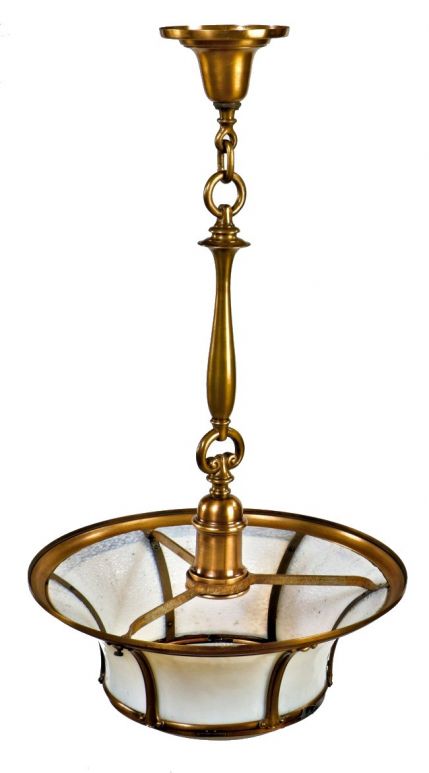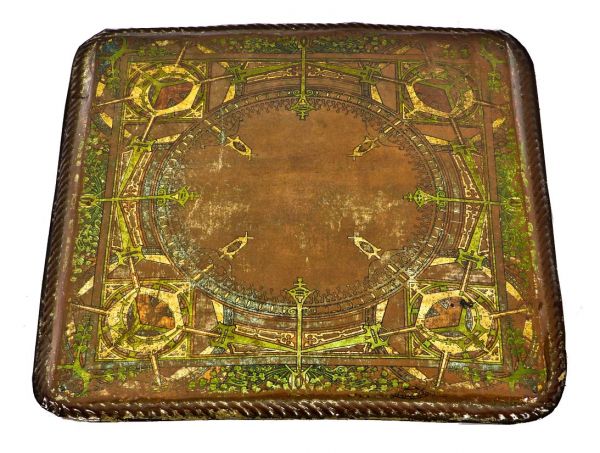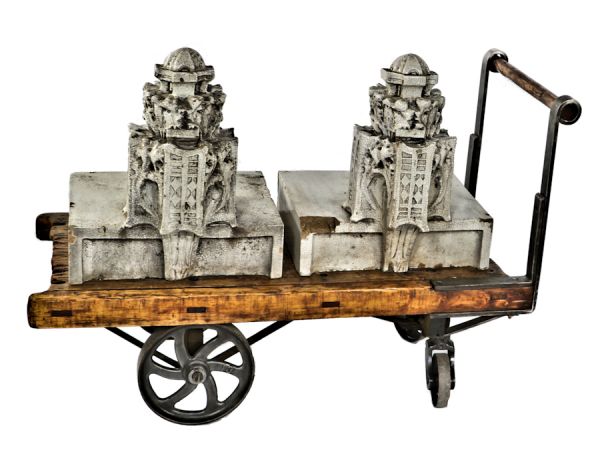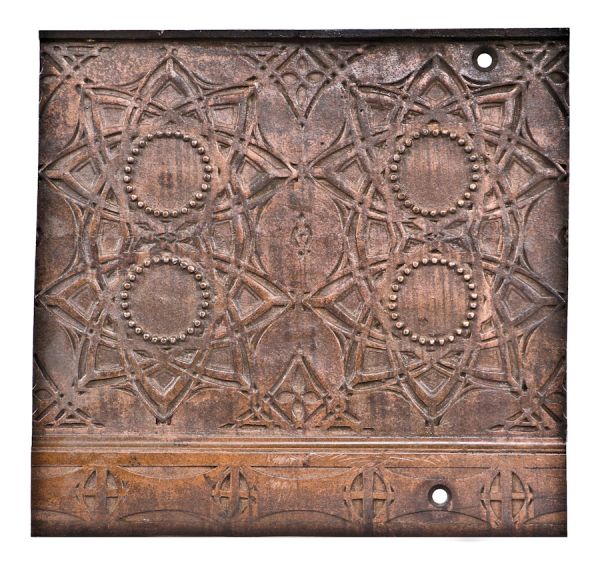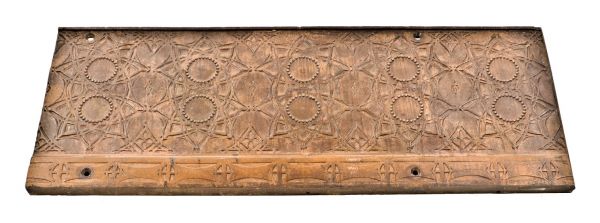original c. 1929 historically important american art deco style cast concrete chicago stadium exterior frieze panel head fragment
SOLD
Out of stock
SKU
UR-24733-16
eric e. hall, lawrence & ratcliffe, architects
months after the newly-built united center indoor sports arena (home to both the chicago bulls and the blackhawks) opened in august of 1995, demolition of chicago stadium began in march of 1995 (its site is now a parking lot for the united center across the street). news channel cnn televised the demolition, showing devoted both blackhawks and bulls fans crying as the wrecking ball repeatedly smashed into the vacated stadium. during the stadium's demolition, numerous architectural artifacts, equipment, seating, and other materials were salvaged and distributed to various institutions, souvenir seekers and/or collectors, athletes, etc. a few notable examples include the console of the gargantua barton organ that now resides in phil maloof's residence in las vegas, nevada. the center of the chicago bulls' floor resides in michael jordan's trophy room at his mansion in north carolina. the cornerstone and two complete massive cast concrete friezes (one consisting of 24 individual panels and the other 14 panels) were incorporated into the exterior facade of st. ignatius's gymnasium (see images below). the "severed head" architectural fragment was apart of one of the stadium's cast concrete friezes that did not survive intact. the weathered and worn head is comprised of crude aggregate with lightly incised detail of facial features and the wavy art deco style hair. research on the designer and/or fabricator of the concrete ornament adorning the exterior of the non-extant stadium is ongoing. the chicago stadium at 1800 w. madison, was an indoor arena opened in 1929 at a cost of over $7 million, as the largest structure of its kind. its architect was eric e. hall, a swedish immigrant and high level mason who also designed many of the county's largest buildings-including the criminal courts building, county jail, and juvenile home. the stadium was modeled on detroit's olympic stadium, and was the first arena to have an air conditioning system; its seating capacity was over 15,000, designed to offer affordable entrance with unobstructed views. the arena opened with a boxing match, and thereafter played host to various sporting events, midget car races, rodeos, political conventions, concerts, water shows, races, circuses, soccer games and church services. championship hockey, basketball and football games took place inside the arena when weather prohibited outdoor events. it was constructed with steel trusses that spanned 266 feet without supports, and boasted acoustics worthy of the noisy crowds and booming pipe organ -- a custom-built instrument that was said to have the volume of a 2500-piece military band. the exterior facade of the arena featured large electric signs, lit up on madison street and warren boulevard. near the roofline were large limestone bas-relief sculptures depicting athletes in classical poses. the chicago stadium was first raised by west side promoter paddy harmon, who aimed to bring big-time hockey to the windy city. in 1909, harmon had been instrumental in building the ice palace at van buren and paulina, an ice skating and hockey venue. harmon was an irish immigrant who hustled a number of odd jobs in his youth before becoming a respected dance hall manager by the 1920's. prior to the building of chicago stadium, the city's main indoor sports and exhibition center was the coliseum, at 1513 south wabash. in 1926, harmon began gathering investors for an ambitious sports stadium that would surpass existing venues. after several years of gathering momentum from backers, and six months of rapid construction, the stadium was finally completed. its opening loughran-walker boxing match attracted around 14,000 people and initiated the life of the site. paddy harmon served as manager for less than a year, as initial revenues were lower than expected at the onset of the great depression. after 65 years of use, in 1995 owner william wirtz razed the structure in favor of building the updated united center.
You Might Also Like
WORDLWIDE SHIPPING
If required, please contact an Urban Remains sales associate.
NEW PRODUCTS DAILY
Check back daily as we are constantly adding new products.
PREMIUM SUPPORT
We're here to help answer any question. Contact us anytime!
SALES & PROMOTIONS
Join our newsletter to get the latest information

